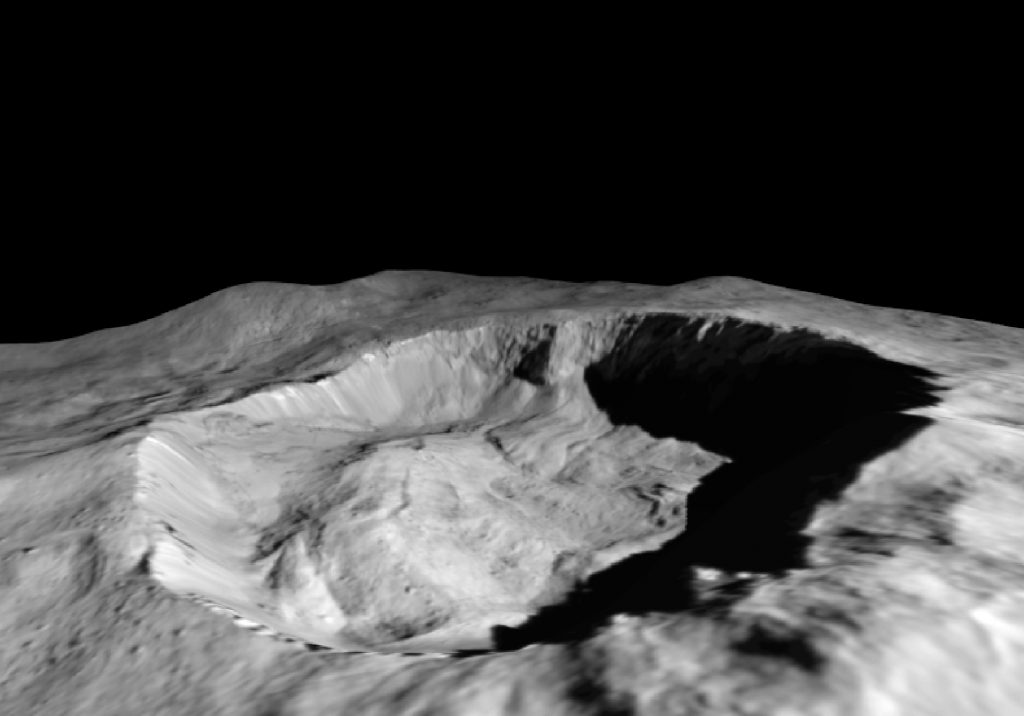NASA’s Dawn mission has found recently exposed deposits that give us new information on the materials in the crust of Ceres that is the only dwarf planet in inner solar system and how they are changing, according to two papers published March 14 in Science Advances that document the new findings.
Observations obtained by the visible and infrared mapping spectrometer (VIR) on the Dawn spacecraft previously found water ice in a dozen sites on Ceres. The new study revealed the abundance of ice on the northern wall of Juling Crater, a crater 12 miles (20 kilometers) in diameter. The new observations, conducted from April through October 2016, show an increase in the amount of ice on the crater wall.
Previous data had shown Ceres has a crust about 25 miles (40 km) thick and rich in water, salts and possibly organics. “The combination of Ceres moving closer to the sun in its orbit, along with seasonal change, triggers the release of water vapor from the subsurface, which then condenses on the cold crater wall,” said Andrea Raponi of the Institute of Astrophysics and Planetary Science in Rome, who led the study. “This causes an increase in the amount of exposed ice. The warming might also cause landslides on the crater walls that expose fresh ice patches.”
This study marks the first time hydrated carbonate has been found on the surface of Ceres, or any other planetary body besides Earth, giving us new information about the dwarf planet’s chemical evolution.
Water ice is not stable on the surface of Ceres over long time periods unless it is hidden in shadows, as in the case of Juling. Similarly, hydrated carbonate would dehydrate, although over a longer timescale of a few million years.
The Dawn is a project of the directorate’s Discovery Program, managed by NASA’s Marshall Space Flight Center in Huntsville, Alabama, managed by JPL.
The great diversity of material, ice and carbonates, exposed via impacts, landslides and cryovolcanism suggests Ceres’ crust is not uniform in composition.

